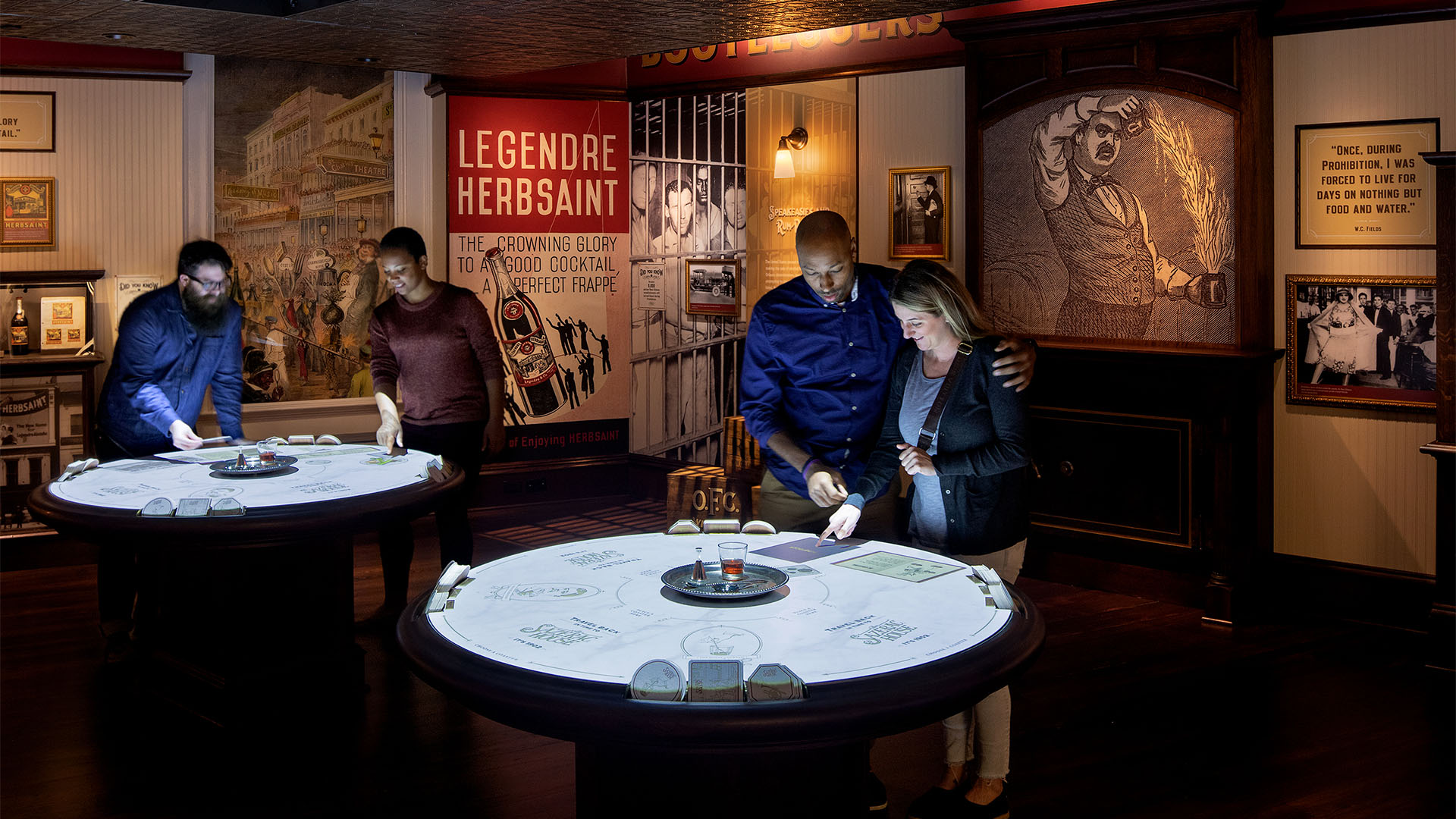Cafe Culture
Cafe Culture is an immersive exploration, bringing history into the present and showing just how much New Orleans contributed to cocktail- making throughout time. This magical experience, takes people back to the Sazerac Coffee House circa 1902—a bustling gathering place to cut deals, order the best cocktails and admire master mixologists. Visitors activate stories by placing three- dimensional coasters around the table to meet their most famous bartender, enjoy tales of spirited history, and learn their signature cocktail. In the end, the coaster, complete with a recipe on the back, becomes a souvenir to take home.
Agency
Gallagher & Associates
Practice Area
Client
Sazerac House
Industry

The Challenge
The greatest challenge was to create an inviting group experience where technology disappears. Something that’s true to the time period we’re seeking to recreate. We wanted people to feel undaunted and compelled to simply interact and learn stories in an unexpected way—placing physical bar coasters on the table to begin, and touching that analog surface to explore the content. Finding the right solutions to give it a truly invisible appearance was challenging and required many rounds of prototyping, user testing and design iterations. For the coasters to unlock different stories, we also tested different methods to visually determine physical rotation such as features vs. shapes. Then, we needed to recreate objects, scenes, and graphics that felt authentic to the time period. Creating and maintaining high visual fidelity of those graphics and content presented another challenge. Lastly, we wanted people to come away with something tangible to remember the experience.

Jeremy Bittermann
Design + Execution
We created a bespoke experience by opting for a custom table, with an analog look and feel, over a digital touch screen. We used a tiny, 360- degree infrared emitter paired with an infrared camera and projector to make it a touch surface. For prototyping, we built a mock table to test integration techniques and user test interactivity, until we perfected it. We chose physical coasters to activate the experience—matching their shape to a specific story. To recognize them, a simple RGB camera above the table and a computer vision application allowed us to “see” which object was placed there. For content, we recreated objects, scenes and graphics to be period- specific. Food and drink recipes and period objects were recreated and brought to life digitally in each of the stories. To reduced well time, stories–while rich–were created to be light and nonlinear so visitors can move through quickly.

Jeremy Bittermann
Project Details
Design Team
Gallagher & Associates
Collaborators
Solomon Group (exhibit fabrication & a/v integration)
Trapolin-Peer (architect)
RomeAntics (a/v systems design)
Available Light (exhibition lighting design)
History Associates (content research & writing)
Photo Credits
Jeremy Bittermann
Open Date
October 2019

